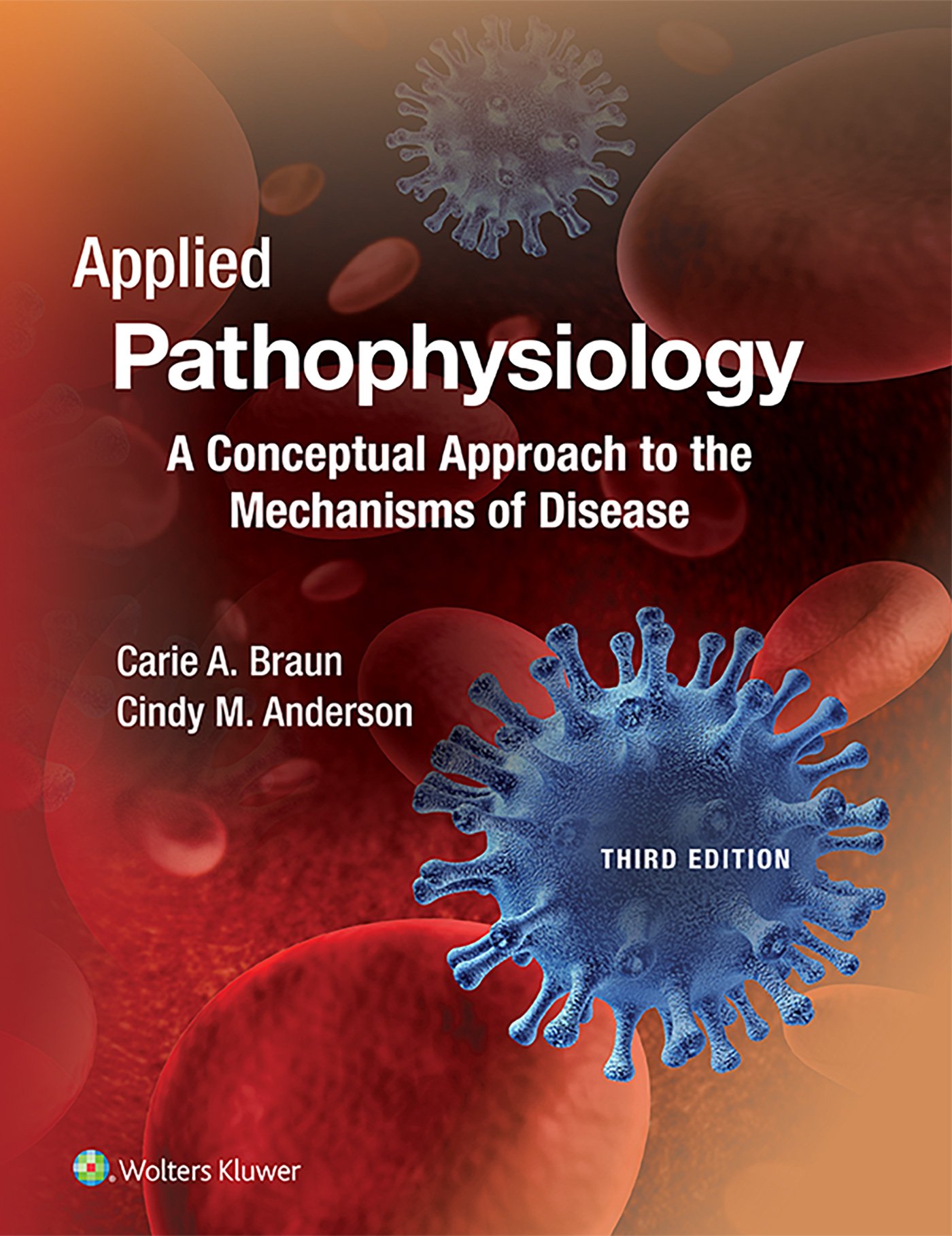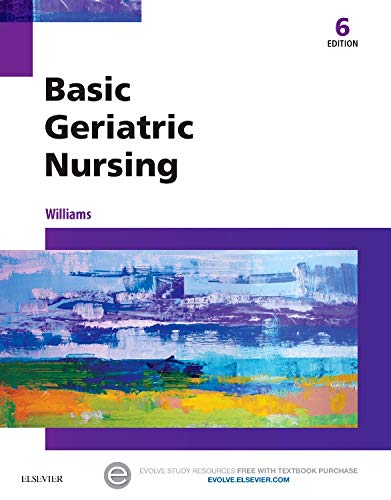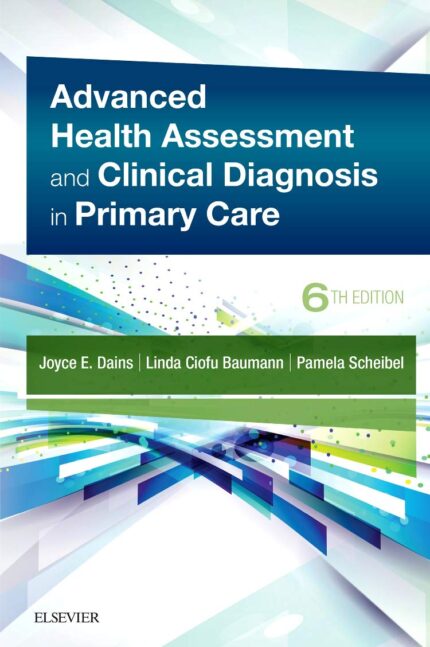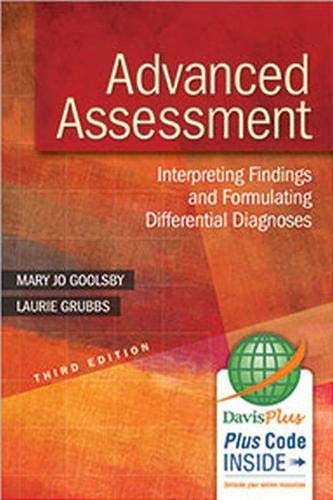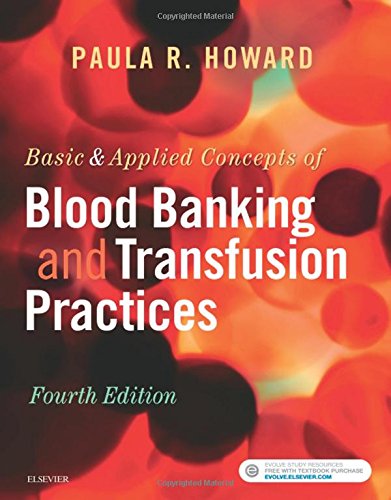Test Bank for Applied Pathophysiology A Conceptual Approach to the Mechanisms of Disease 3rd Edition
Test Bank for Applied Pathophysiology A Conceptual Approach to the Mechanisms of Disease 3rd Edition
Applied Pathophysiology A Conceptual Approach to the Mechanisms of Disease 3rd Edition – Test Bank
Applied Pathophysiology A Conceptual Approach to the Mechanisms of Disease
Applied Pathophysiology A Conceptual Approach to the Mechanisms o
Chapter 1 Introduction to Pathophysiology
1. The nucleus , which is essential for function and survival of the cell.
A) is the site of protein synthesis
B) contains the genetic code
C) transforms cellular energy
D) initiates aerobic metabolism
2. Although energy is not made in mitochondria, they are known as the power
plants of the cell because they:
A) contain RNA for protein synthesis.
B) utilize glycolysis for oxidative energy.
C) extract energy from organic compounds.
D) store calcium bonds for muscle contractions.
3. Although the basic structure of the cell plasma membrane is formed by a lipid
bilayer, most of the specific membrane functions are carried out by:
A) bound and transmembrane proteins.
B) complex, long carbohydrate chains.
C) surface antigens and hormone receptors.
D) a gating system of selective ion channels.
4. To effectively relay signals, cell-to-cell communication utilizes chemical
messenger systems that:
A) displace surface receptor proteins.
B) accumulate within cell gap junctions.
C) bind to contractile microfilaments.
D) release secretions into extracellular fluid.
5. Aerobic metabolism, also known as oxidative metabolism, provides energy by:
A) removing the phosphate bonds from ATP.
B) combining hydrogen and oxygen to form water.
C) activating pyruvate stored in the cytoplasm.
D) breaking down glucose to form lactic acid.
6. Exocytosis, the reverse of endocytosis, is important in into the
extracellular fluid.
A) Engulfing and ingesting fluid and proteins for transport
B) Killing, degrading, and dissolving harmful microorganisms
C) Removing cellular debris and releasing synthesized substances
D) Destruction of particles by lysosomal enzymes for secretion
7. The process responsible for generating and conducting membrane potentials is:
A) diffusion of current-carrying ions.
B) millivoltage of electrical potential.
C) polarization of charged particles.
D) ion channel neurotransmission.
8. Epithelial tissues are classified according to the shape of the cells and the
number of layers. Which of the following is a correctly matched description
and type of epithelial tissue?
A) Simple epithelium: cells in contact with intercellular matrix; some do not
extend to surface
B) Stratified epithelium: single layer of cells; all cells rest on basement
membrane
C) Glandular epithelium: arise from surface epithelia and underlying
connective tissue
D) Pseudostratified epithelium: multiple layers of cells; deepest layer rests on
basement membrane
9. Connective tissue contains fibroblasts that are responsible for:
A) providing a fibrous framework for capillaries.
B) synthesis of collagen, elastin, and reticular fibers.
C) forming tendons and the fascia that covers muscles.
D) filling spaces between tissues to keep organs in place.
10. Although all muscle tissue cells have some similarities, smooth muscle (also
known as involuntary muscle) differs by:
A) having dense bodies attached to actin filaments.
B) containing sarcomeres between Z lines and M bands.
C) having rapid contractions and abundant cross-striations.
D) contracting in response to increased intracellular calcium.
11. Which of the following aspects of the function of the nucleus is performed by
ribosomal RNA (rRNA)?
A) Copying and carrying DNA instructions for protein synthesis
B) Carrying amino acids to the site of protein synthesis
C) Providing the site where protein synthesis occurs
D) Regulating and controlling protein synthesis
12. Breakdown and removal of foreign substances and worn-out cell parts are
performed by which of the following organelles?
A) Lysosomes
B) Golgi apparatus
C) Ribosomes
D) Endoplasmic reticulum (ER)
13. Impairment in the function of peroxisomes would result in:
A) inadequate sites for protein synthesis.
B) an inability to transport cellular products across the cell membrane.
C) insufficient energy production within a cell.
D) accumulation of free radicals in the cytoplasm.
14. After several months of trying to conceive, a couple is undergoing fertility
testing. Semen analysis indicates that the man’s sperm have decreased motility,
a finding that is thought to underlie the couple’s inability to become pregnant.
Which of the following cellular components may be defective within the man
sperm?
A) Ribosomes
B) Microtubules
C) Mitochondria
D) Microfilaments
15. Which of the following statements is true of glycolysis?
A) Glycolysis requires oxygen.
B) Glycolysis occurs in cells without mitochondria.
C) Glycolysis provides the majority of the body’s energy needs.
D) Glycolysis produces energy, water, and carbon dioxide.
16. Which of the following membrane transport mechanisms requires the greatest
amount of energy?
A) Facilitated diffusion
B) Passive transport
C) Vesicular transport
D) Simple diffusion

